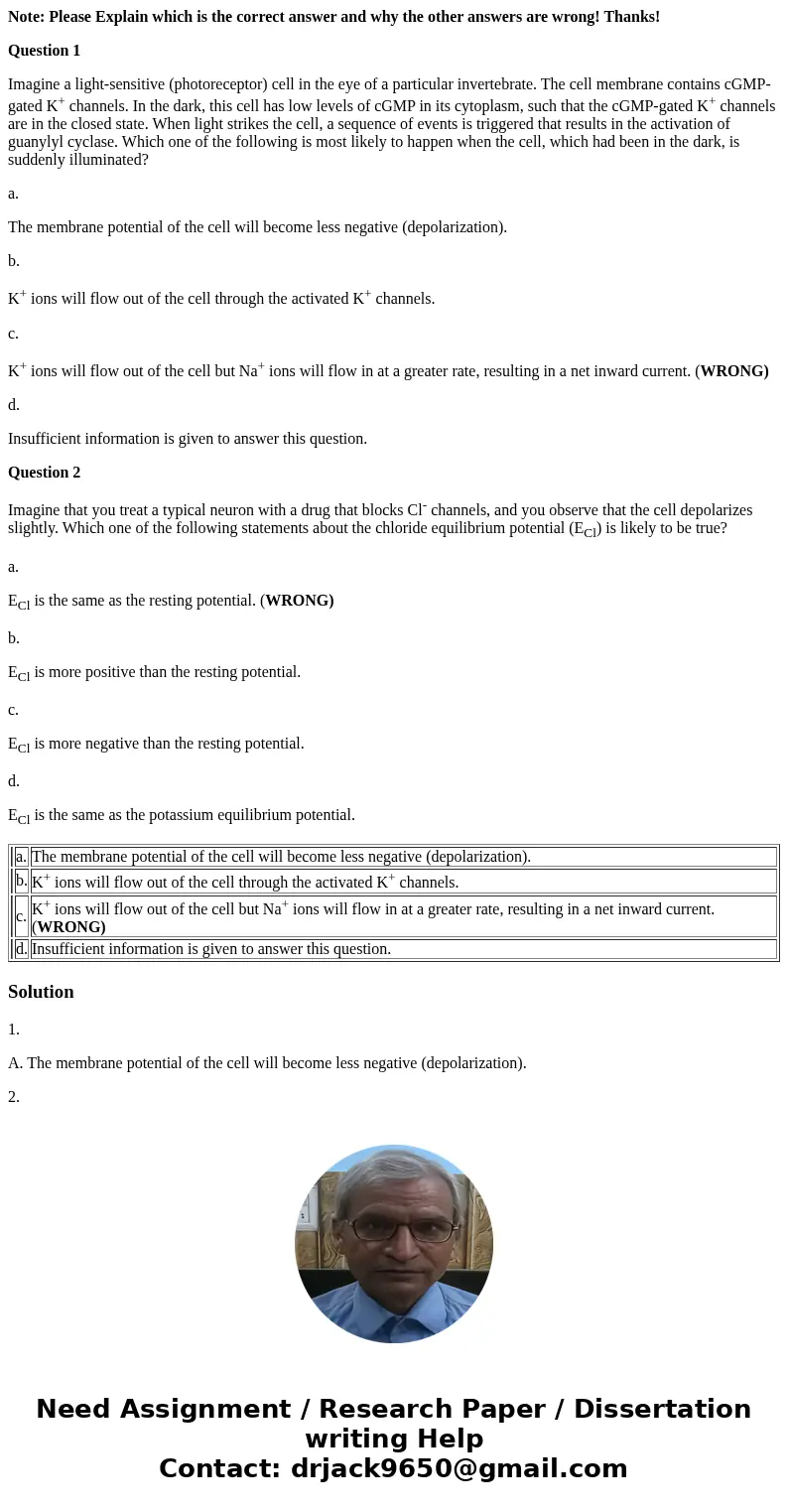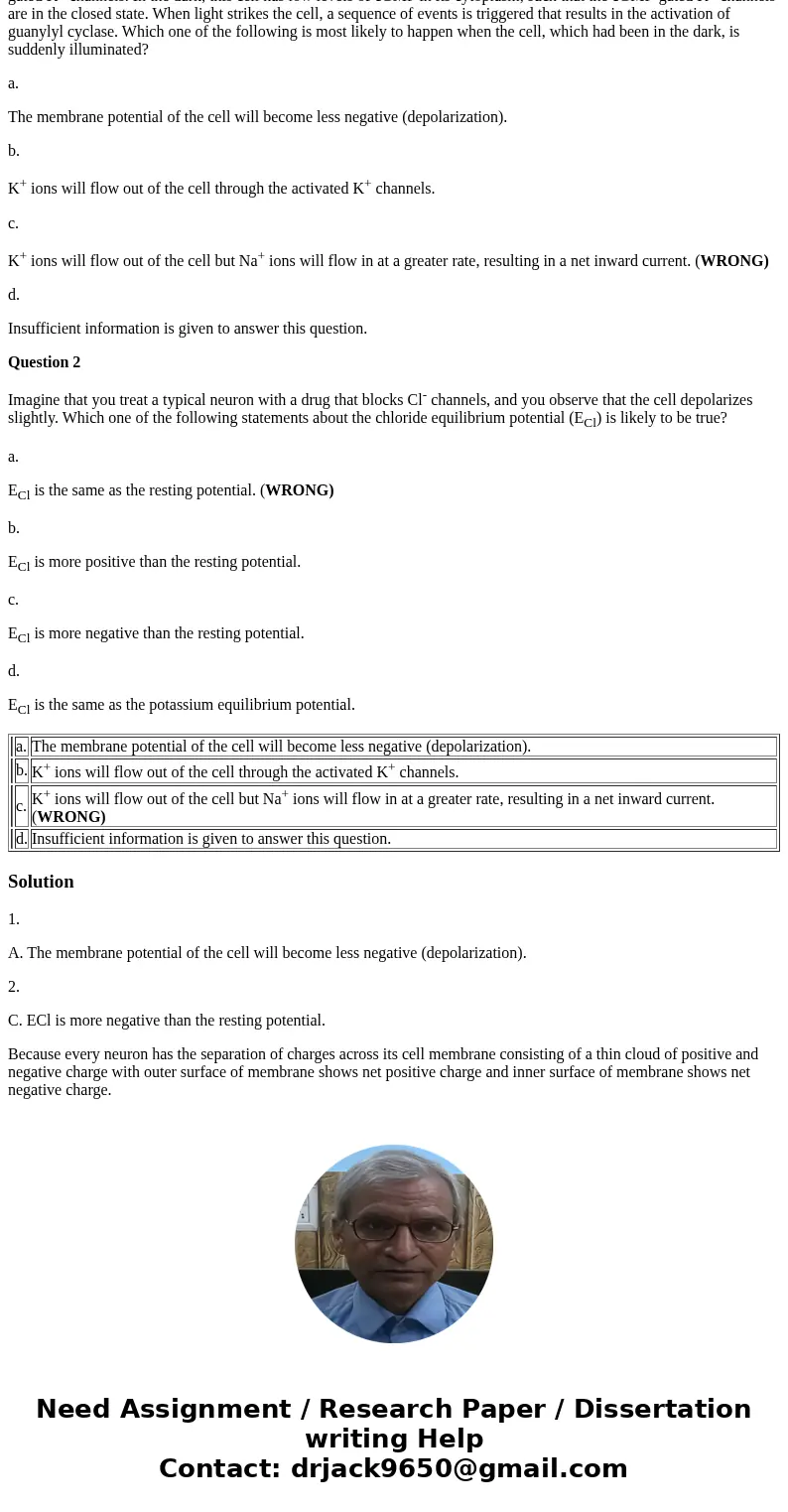Note Please Explain which is the correct answer and why the
Note: Please Explain which is the correct answer and why the other answers are wrong! Thanks!
Question 1
Imagine a light-sensitive (photoreceptor) cell in the eye of a particular invertebrate. The cell membrane contains cGMP-gated K+ channels. In the dark, this cell has low levels of cGMP in its cytoplasm, such that the cGMP-gated K+ channels are in the closed state. When light strikes the cell, a sequence of events is triggered that results in the activation of guanylyl cyclase. Which one of the following is most likely to happen when the cell, which had been in the dark, is suddenly illuminated?
a.
The membrane potential of the cell will become less negative (depolarization).
b.
K+ ions will flow out of the cell through the activated K+ channels.
c.
K+ ions will flow out of the cell but Na+ ions will flow in at a greater rate, resulting in a net inward current. (WRONG)
d.
Insufficient information is given to answer this question.
Question 2
Imagine that you treat a typical neuron with a drug that blocks Cl- channels, and you observe that the cell depolarizes slightly. Which one of the following statements about the chloride equilibrium potential (ECl) is likely to be true?
a.
ECl is the same as the resting potential. (WRONG)
b.
ECl is more positive than the resting potential.
c.
ECl is more negative than the resting potential.
d.
ECl is the same as the potassium equilibrium potential.
| a. | The membrane potential of the cell will become less negative (depolarization). | |
| b. | K+ ions will flow out of the cell through the activated K+ channels. | |
| c. | K+ ions will flow out of the cell but Na+ ions will flow in at a greater rate, resulting in a net inward current. (WRONG) | |
| d. | Insufficient information is given to answer this question. |
Solution
1.
A. The membrane potential of the cell will become less negative (depolarization).
2.
C. ECl is more negative than the resting potential.
Because every neuron has the separation of charges across its cell membrane consisting of a thin cloud of positive and negative charge with outer surface of membrane shows net positive charge and inner surface of membrane shows net negative charge.


 Homework Sourse
Homework Sourse